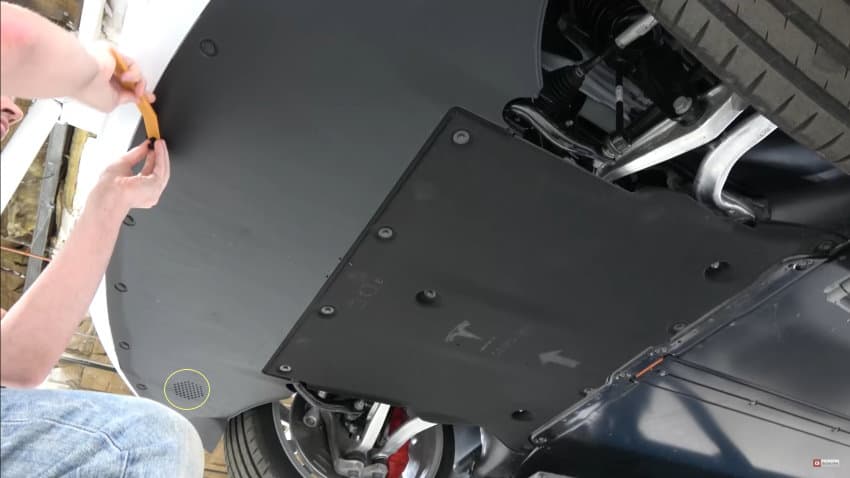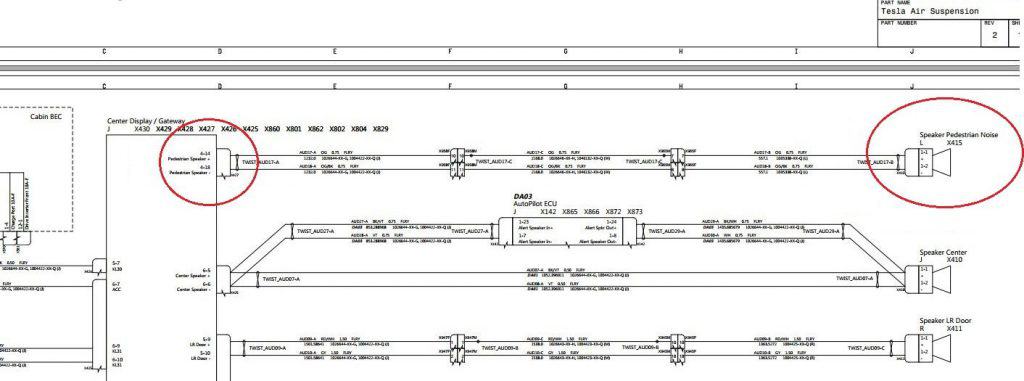Due to how they work, electric cars produce less noise than gasoline-powered cars – especially at low speeds where the noise from wheels is also quite low. As a result, it can be harder for pedestrians and cyclists to hear electric cars driving by – potentially leading to injury or death if (for example) a pedestrian steps out into the road, thinking no car is around.
As a result, various countries have started to introduce legislation which requires “quiet vehicles” – such as hybrid or all-electric cars – to emit a ‘pedestrian warning sound’, also called ‘fake engine noise’. Japan issued such guidelines in January 2010, whilst America’s NHTSA issued a ruling in February 2018 saying that warning sounds will be needed by September 2020. The European Union have similar rules which have already come into force, requiring new electric cars to emit these pedestrian sounds from 1st July 2019.
This sound will tend to be produced when an electric car is travelling below 19 mph (30 kmh). Because the topic of warning noise is so new and is not currently legally enforced outside of the EU, there is no real international standard regarding how this fake noise should sound. Hence this article will show the various sounds that car manufacturers have chosen to implement in their electric vehicles.
The Jaguar I-Pace, the luxury SUV, has a permanently equipped engine sound (aka it will play in all countries, even without fake noise legislation) which plays below 18 mph:
… we’re not sure about you, but the ‘ramp up’ sound seems akin to an air-raid warning siren to us!
The Tesla Model 3 recently got the warning sound update (with any new Model S and X models soon to have this too), with the sound varying depending on the speed of the car and also whether the car is in drive or reverse:
Opinion on the internet is split on these sounds, but we find it generally a bit odd: it is futuristic but also boring/monotonous.
Next up is the 2019 Chevy Volt EV, the American compact EV:
… which to us sounds quite peaceful and serene! Not what you’d expect from a car, but then again, there’s no need for them to sound annoying!
Next we look at the Nissan Leaf, where we unfortunately couldn’t find a great video showing the ‘approaching vehicle sound for pedestrian’ noise (as Nissan calls) it, but this video shows the reverse and approach sounds a little bit:
… the reverse sound is similar to a lorry backing up, whilst going forward there’s a rattling/vibration type sound similar to a gasoline-powered car.
The French car Renault Zoe has a few engine sounds, which they call the ‘ZE Voice’:
… which is tricky to describe, other than to say it sounds similar to standard cars – but more robotic?!
Next is the six year old Fisker Karma, a now defunct luxury car (and company):
… this sounds, to us, like a slightly ‘posher’ – but rougher – version of the Chevy Volt sound?!
We hope you speak Japanese (just kidding), since the Toyota Prius has a pedestrian warning sound – but only in Japan:
… this sounds a little like the I-Pace to us.
Next we look at the Toyota Rav4 XLE hybrid:
… where we agree with the description (“A hard to explain sound”) – it’s different to the other sounds we have heard so far.
The German BMW i3’s fake noise is a bit of a turbine sound.
Japanese hybrid Honda Accord:
… which is a fairly strange, almost ‘playful’ sound to us?
Finally, the Mitsubishi i-Miev (also called the Peugeot iOn, depending on the market) sounds like:
… has a quiet ringing sound, like a far-away house alarm.
Phew, we hope you’re enjoyed those examples. It’s not easy describing most of these sounds, so feel free to let us know if you disagree with how we described any of them! Equally, please let us know if you find a video or audio clip of other hybrid or EV fake noise sounds. If you wanted to know more about the technical detail of how these sounds are emitted, read on.
How These Warning Sounds Are Emitted
Pedestrian warning sounds can be made via a few different approaches as we explore below, although the one commonality is that they use waterproof speakers to emit the sound:
- Enhanced Vehicle Acoustics have produced a system which is used by hybrids, which emits a noise when the car switches to use the battery. Their system relies on multiple all-weather speakers within each wheel well, and they emit tailored sounds depending on the speed and direction of the car to minimize noise pollution.
- Swedish company SoundRacer AB have produced the SoundRacer EVS which uses pre-recorded sounds from actual gasoline cars (at different speeds, RPMs and directions) to play back with their weather-protected 25W speaker and 20W amplifier to ensure the sound is heard properly, driven by a Hall effect speed sensor which adapts the emitted sound to the speed gathered from magnets on the rear wheels.
- Fisker Automotive are still working their way to a mass production EV, but their Karma has been known to emit pedestrian warning sounds from external speakers which are embedded within the bumper itself. The sounds that get played were tested in a soundproof audio chamber to ensure that the ‘right’ noise was chosen (from dozens of potential candidate sounds).
- Nissan’s Vehicle Sound for Pedestrians (VSP) system is hooked into the main system computer and a synthesizer helps control the sound which is emitted from a single speaker located within the front driver’s wheel well.
How Tesla’s Pedestrian Warning Sound Works
Less is known about how exactly Tesla’s noisemaker works, although a handy video from DÆrik – along with some leaked schematics – helps to give a good insight. Firstly, the undercarriage has a speaker grill visible near the front bumper when looking underneath a Model 3:

On the inside of the Tesla, there are three mounting points which a speaker can easily be attached to:

This will hook into the main Tesla computer and probably use an amplifier to ensure the sound is heard appropriately (i.e. so the sound can be made louder or quieter depending on external factors and vehicle speed).
For those wanting even more detail, Electrek captured an interesting detail from some leaked Tesla Model S schematics from 2016 which show exactly how a “Speaker Pedestrian Noise” would fit in:

